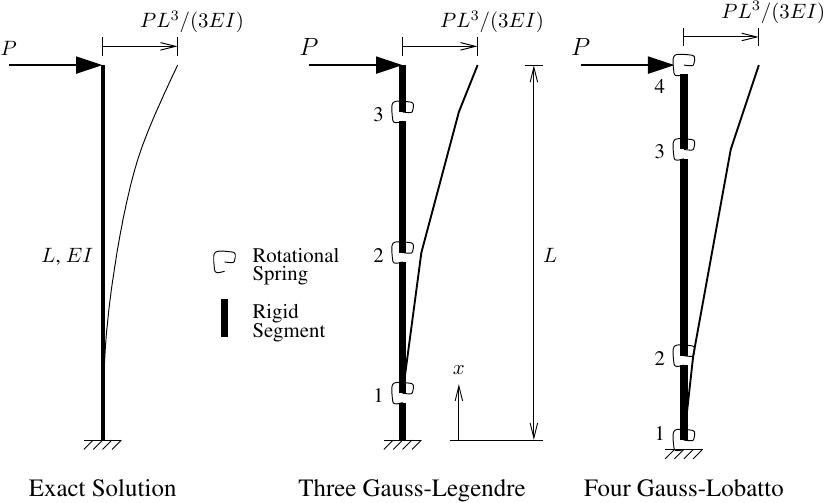OpenSees Cloud
OpenSees AMI
A Complicated Equivalent
Original Post - 01 May 2022 - Michael H. Scott
Show your support at Buy Me a Coffee.
Whether you use closed-form or numerical integration, the deflection at
the free end of a laterally loaded linear-elastic, prismatic column is
known to be PL3/(3EI). This result is easily verified in
OpenSees with either an
elasticBeamColumn
element or a
material nonlinear element with elastic sections.
Now suppose we philosophized a bit then posited the following modeling approach…
Instead of a single element for that column, let’s use a series of zero length rotational springs connected by flexurally rigid segments. The rotational springs are collocated with the integration points from whatever quadrature rule you like, e.g., three-point Gauss-Legendre or four-point Gauss-Lobatto as shown below, or any other integration option.

My question is, what stiffness should be assigned to each rotational spring in order to compute the correct free end deflection, PL3/(3EI), using a springs and rigid segments model?
- EI
- EI/L
- 3EI/L
- EI/wi
- EI*wi
- None of the above
In options D and E, wi is the integration weight on the column domain [0,L] associated with quadrature point/spring location xi, meaning the stiffness is not the same for each spring.
Post your answer with an explanation in the comments section below. I will explain the correct answer in a follow up post. Responses are due by May 31, 2022.
While you can develop a model in OpenSees or use good ‘ol pencil and paper to figure out the correct answer, I don’t recommend you use this modeling approach anywhere else. As usual, complicated is not better.